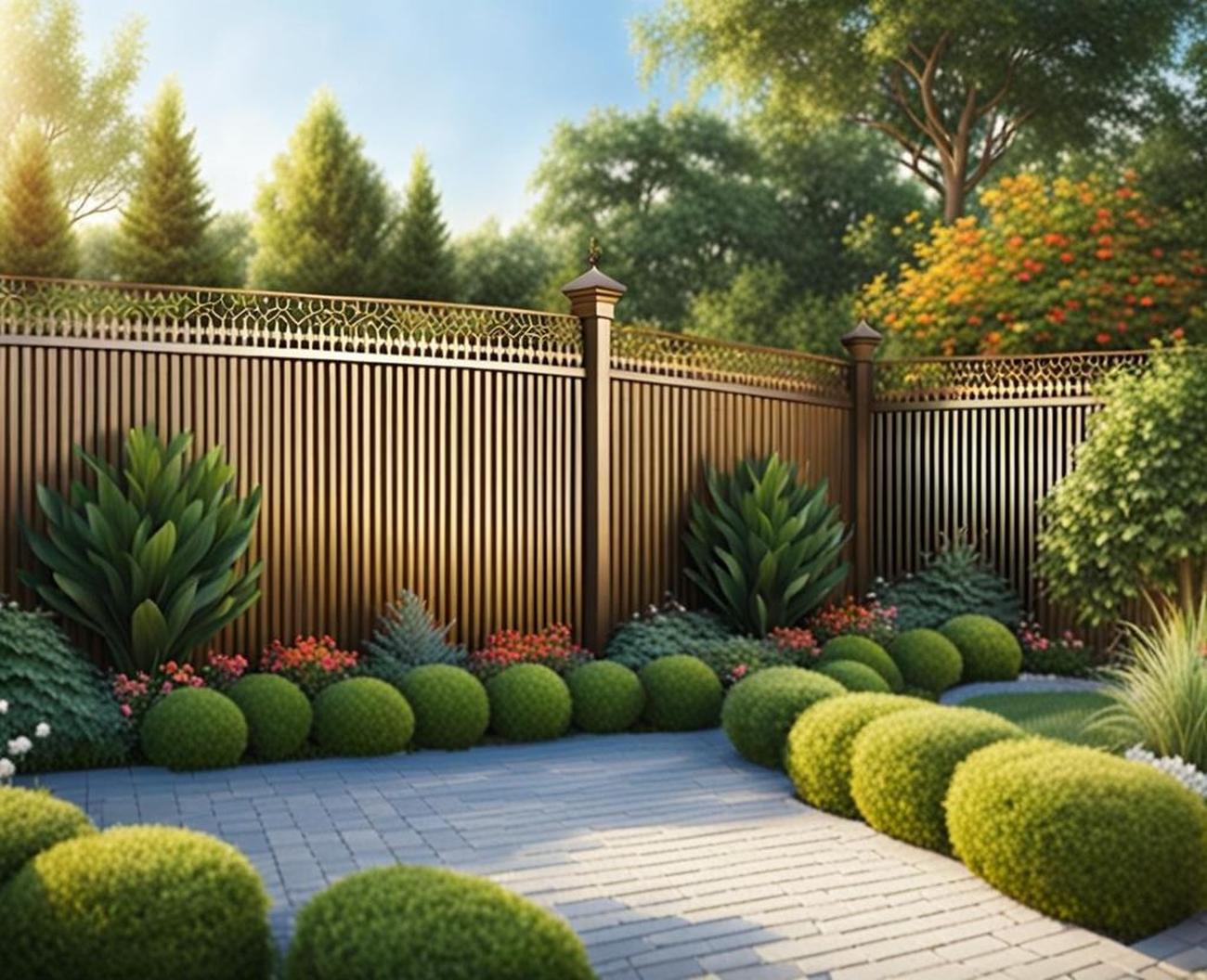A beautifully designed decorative fence can completely transform the look and feel of your garden. The right fencing not only defines your outdoor space but also adds privacy, character and visual interest. With so many materials, styles and custom design options to choose from, you’re sure to find the perfect decorative fence to suit your home’s architecture and garden style.
Materials for Decorative Garden Fences
Wooden Fences
Wood fences provide a classic, natural look that blends effortlessly into garden landscapes. Popular wooden fence styles include traditional picket, lattice, log rail and split rail designs. While beautiful, wood does require regular maintenance such as staining or sealing to prevent rotting and decay. Overall, wood offers a timeless and versatile fencing option.
Vinyl Fences
For a lower maintenance alternative, vinyl is an excellent material for decorative fences. Vinyl fences are affordable, durable and weather-resistant. They retain their color well, never need painting and won’t rot or warp. Vinyl allows for designs that mimic wood textures and styles, like picket and lattice, but with almost no upkeep required. Vinyl is a great choice for low-maintenance beauty.
Aluminum Fences
Aluminum garden fences provide a sleek, contemporary look. This industrial material is sturdy, rust-resistant and stands up well to weather and wear-and-tear. Aluminum allows for modern, stylish designs like horizontal fencing or cable infill panels. The metallic finish gives an eye-catching look. Aluminum is ideal for modern landscapes.

Wrought Iron Fences
For an elegant, ornamental look, wrought iron is a timeless choice. Intricate scrollwork and detailed designs provide enhanced security with style. Wrought iron offers unlimited customization options, allowing you to create a statement piece. Keep in mind that regular maintenance is required to prevent rust. Overall, iron fencing evokes old-world charm.
Key Factors When Selecting a Decorative Fence
Aesthetic Style
When choosing a decorative fence, consider your home’s architectural style and the overall personality of your garden. Formal gardens, for example, pair well with iron fences, while cottages suit softer wooden picket fences. Think about whether a traditional or contemporary style fence is more suitable. Matching the fence to your home is key.
Functional Purpose
In addition to aesthetics, consider the functional purpose of your decorative fence. If privacy is a key concern, a taller solid fence is ideal. For pet containment, visibility and adequate height are important. Child safety may require a fully enclosed fence. Identify any functional needs before choosing a fence.
Installation and Budget
Determine whether a DIY installation is feasible or if hiring a professional is preferable. Also, get quotes on materials and labor so you can budget accordingly. While DIY kits are cheaper initially, low quality materials won’t endure. Spending more upfront on durable, quality fencing that comes with a long guarantee is often more cost-effective long-term.
Design Ideas for Stylish Decorative Fences
Mix Materials
For added visual interest, combine different materials like wood, metal and masonry. For example, a stone pillar with wrought iron infill panels and a wooden gate makes a stunning mixed media fence. Using a blend of materials creates texture and depth.
Add Decorative Touches
Customize your fence with decorative accents to enhance its style. Consider attaching flowering vines or trellises, adding potted plants at the base, or installing festoon lights along the top. Painting your fence a fun, bright color also adds personality. These small touches make the fence a focal point.
Incorporate Architectural Features
Structures like arbors, pergolas and trellises integrate beautifully with garden fences. Other options like decorative gates, archways or planter boxes also complement fencing. These features add architectural interest and expand your living space.
Choose a Cohesive Look
Your fence should complement the overall landscape design. For example, pair a formal hedge and iron fence with structured plantings or combine a rustic wood fence with informal, eclectic plantings for a cohesive look. Let your fence enhance your garden style.
Transforming Your Garden with Decorative Fencing
Enhance Curb Appeal
A decorative fence or gate makes a stylish first impression and instantly enhances curb appeal. Use fence lines to create a focal point at the entry to your property. This defines the landscape and draws the eye in.
Define Functional Zones
Strategically place fences or partitions to delineate separate entertaining spaces like a dining patio or built-in barbecue zone. Fences also help define other functional areas like gardens, lawns or play areas.
Add Privacy
Install taller, more opaque fencing around entertaining areas or zones where more privacy and seclusion are desired. Decorative fencing can screen out views of neighboring properties and muffle noise.
Express Your Personality
Have fun showcasing your own creative vision through thematic decorative fences. Opt for romantic and ornate iron fencing or go modern with sleek cable fencing. The possibilities are endless.
The perfect decorative fence can enhance the entire look and feel of your landscape. Consider key factors like materials, functionality and budget when selecting your ideal fence. Include creative touches and architectural details to make it a true focal feature. Most importantly, let your decorative fence reflect your own personal style.
